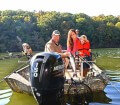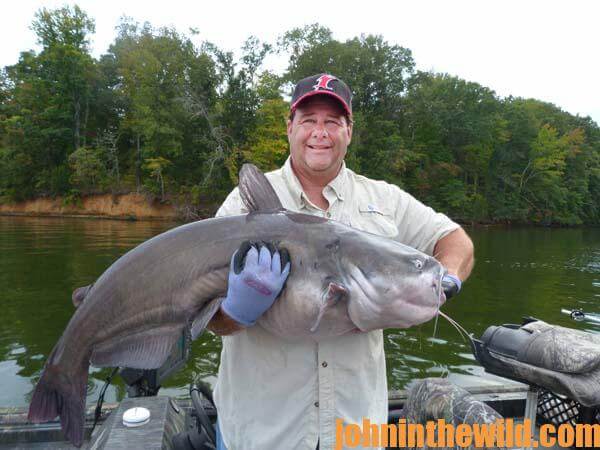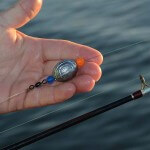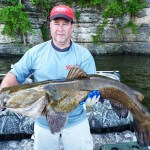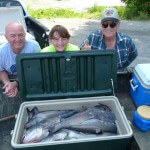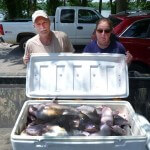John’s Note: You can catch truckloads of catfish during the fall and winter on the Tennessee River that runs through Tennessee, Alabama and Mississippi, if you know how to troll for catfish. In late October, I learned a technique that makes catfishing fun and productive all the way up until about Christmas. This week Brian Barton of Muscle Shoals, Alabama, a professional catfish and smallmouth guide, will teach us all how to catch fall and wintertime cats.
 I like to troll for cats, because we can cover more water and present our baits to more catfish in more locations by trolling than if we anchor on one spot and hope to catch cats. Also, we’re moving at 2 to 4 mph, and we’re fishing with circle hooks. The movement of the boat is very effective in setting the circle hook in a catfish’s mouth when the cat takes the bait. Since we’re fishing with our rods in rod holders, when a catfish is hooked, I know the cat won’t come off the hook, until the angler reels the cat up, and I take the hook out of the cat’s mouth. Using this technique and these hooks, we’ve learned that we can catch far more catfish than we can using straight hooks.
I like to troll for cats, because we can cover more water and present our baits to more catfish in more locations by trolling than if we anchor on one spot and hope to catch cats. Also, we’re moving at 2 to 4 mph, and we’re fishing with circle hooks. The movement of the boat is very effective in setting the circle hook in a catfish’s mouth when the cat takes the bait. Since we’re fishing with our rods in rod holders, when a catfish is hooked, I know the cat won’t come off the hook, until the angler reels the cat up, and I take the hook out of the cat’s mouth. Using this technique and these hooks, we’ve learned that we can catch far more catfish than we can using straight hooks.
To get the catfish to bite, I like to keep fresh bait on my hooks at all times. Many years ago an old catfisherman told me, “Never use the same piece of bait twice, even if you catch a fish on that bait.” Over the years, I’ve noticed that we catch more cats more consistently by constantly baiting with fresh bait. That’s why I carry a lot of bait when I go fishing for meat cats. I change out baits about every 30 minutes. In the winter, you may be able to let the same bait stay in the water 45 minutes instead of 30 minutes.
I’ve also learned that there are certain places on every lake where you’re more likely to catch eating-size catfish than big cats and/or spots where you’re more likely to catch big cats than eating-size cats. When I’m fishing for big catfish, I’ve learned that the herring shad (skipjack) head is the most-productive bait. When I’m fishing for eating-size cats, the shad guts or cut shad is usually the best bait. I don’t know why the head of a skipjack herring produces more big cats than either a herring fillet or a big chunk of cut skipjack, but I’ve observed this phenomenon to be true.
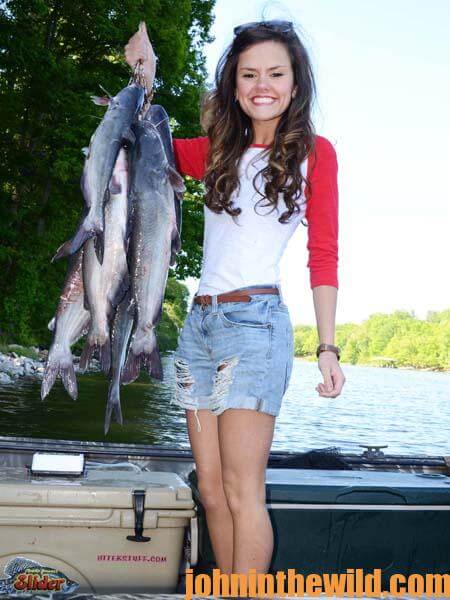 We usually take pictures of and release our trophy cats, but many people just like to eat catfish. So when we’re fishing for eating-size cats, we use smaller baits and smaller hooks and try to catch the cats that are just the right size for delicious table fare. A recent survey said the number-one fish eaten in the U.S. today is tilapia, and the number-two fish consumed by Americans is the catfish. Plenty of channels, blues and flathead catfish are in the Tennessee River. Many people like to fish with us and catch a cooler full of eating-size cats to take home and eat for dinner.
We usually take pictures of and release our trophy cats, but many people just like to eat catfish. So when we’re fishing for eating-size cats, we use smaller baits and smaller hooks and try to catch the cats that are just the right size for delicious table fare. A recent survey said the number-one fish eaten in the U.S. today is tilapia, and the number-two fish consumed by Americans is the catfish. Plenty of channels, blues and flathead catfish are in the Tennessee River. Many people like to fish with us and catch a cooler full of eating-size cats to take home and eat for dinner.
To learn more about trolling for catfish you can email brianbartonoutdoor@aol.com, go to his website at www.brianbartonoutdoors.com, his Facebook page at https://www.facebook.com/Brian-Barton-Outdoors-155558067855049, or call at 256-412-0969.
To learn more about fishing for and cooking catfish, check out John E. Phillips’ print and eBooks for “Catfish Like a Pro,” “13 Freshwater Fish Recipes You Can’t Live Without” and “The Best Wild Game & Seafood Cookbook Ever: 350 Southern Recipes for Deer, Turkey, Fish, Seafood, Small Game and Birds.” Click here to get these books. You can also get “The Catfish Catcher’s Cookbook” for free at https://johninthewild.com/free-books.
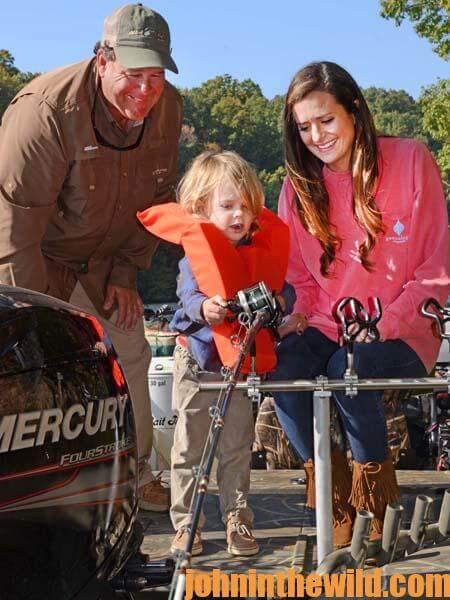 For one of the finest places to stay on the Tennessee River, the Coldwater Inn in Tuscumbia, Alabama, go to http://www.coldwater-inn.com, or call 256-383-6844.
For one of the finest places to stay on the Tennessee River, the Coldwater Inn in Tuscumbia, Alabama, go to http://www.coldwater-inn.com, or call 256-383-6844.
To learn more about the Colbert County section of the Tennessee River, go to Colbert County Tourism at http://www.colbertcountytourism.org, or call 256-383-0783.
Check out these YouTube videos:
“Catching Catfish You Can Fry Whole”
“How and Why to Fish for Catfish”
“How to Find Catfish on Underwater Historical Sites”

